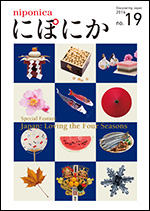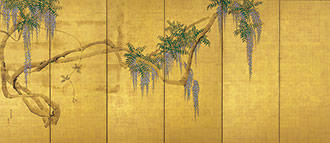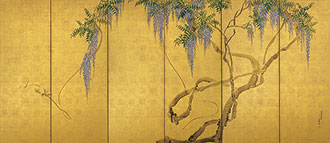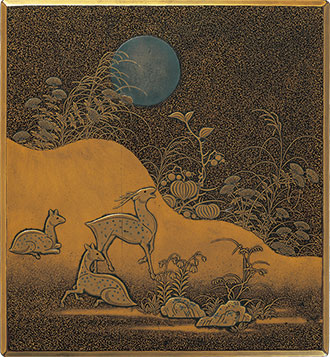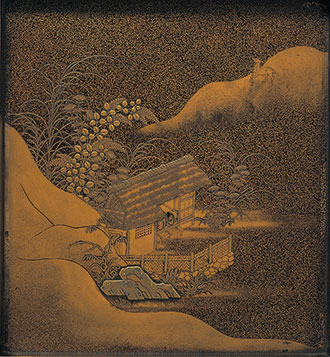niponica is a web magazine that introduces modern Japan to people all over the world.
2016 No.19
Japan: Loving the Four Seasons

Four Seasons and Art
Seasons Reflected in Folding Screens
During the Heian era, folding screens became a medium for shiki-e and tsukinami-e. They subsequently evolved as a form of large-scale painting and grew more visually intense, while retaining their esteemed portrayal of the seasons. Many screen paintings are set in a single location for which images of flowers and birds, or mountains and rivers, are portrayed in tune with the turning seasons.
Of all seasons, spring and fall are especially adored by Japanese. A pair of six-panel screens—Cherry Blossoms in Yoshino and Maple Leaves in Tatsuta—presents cherry blossoms in full springtime bloom (right-hand screen, above), and autumn maple trees (left-hand). The titles incorporate places in Nara Prefecture famed for the flower and the leaf, and the screens, seen as a whole, are most notable for the vivid contrast of spring and autumn scenes. Also depicted are poem strips of compositions about cherry blossoms or autumn leaves. This pair of yamato-e screens, an Edo-period work, distinctly celebrates the rich features of each season.
Please note another painting, Wisteria, by Maruyama Ōkyo, a painter of 18th-century Kyoto. Its most striking feature is an unconventional pictorial element recalling French Impressionism. As you unfold the screen, it exudes the air of early summer—when wisteria flowers bloom. The screen painting is endowed with a sensibility attuned to the four seasons that has been cultivated for centuries.
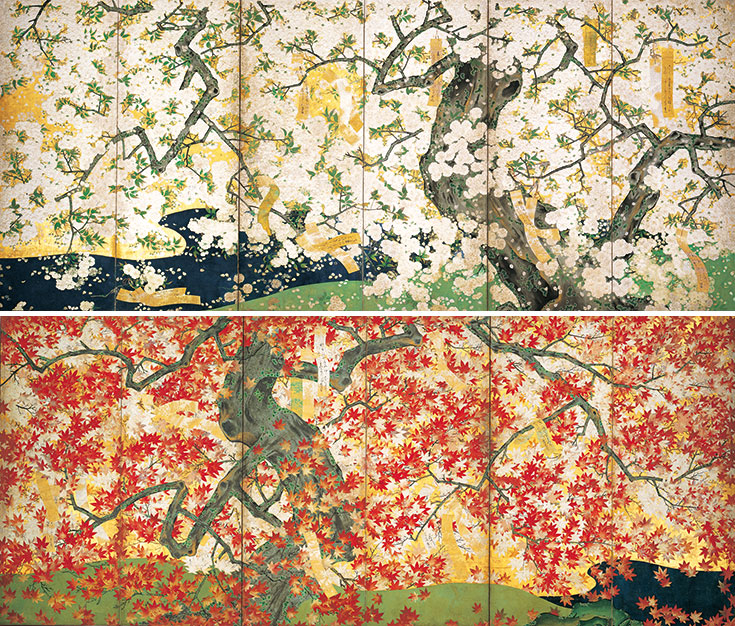
Yoshino tatsuta-zu byobu (“Cherry Blossoms in Yoshino and Maple Leaves in Tatsuta”) Japan Edo period, 17th century Nezu Museum
Seasons Thrive in Craft
Yamato-e seasonal expressions also make their fine appearance in crafts. Consider this lacquerware writing box.
The lid exterior portrays three deer on the slope of a hill thick with autumn grass, all under a full moon. Its interior shows a man looking out from a thatch-roof house. Look closely and you’ll see Japanese characters hid in the design, a fine clue that the writing box design derives from the following Kokin Wakashu poem: Autumn comes lonely / to this mountain village / where cries of the deer / constantly wake me. The lid design communicates a melancholy seen in a doe calling for a stag as autumn deepens.
Important Cultural Property Fujihana-zu byobu (“Wisteria”) By Maruyama Ōkyo Japan Edo period, dated 1776 Nezu Museum
Waka Inspire Seasonal Paintings
Attending carefully to such exquisite work, we note the portrayal of four seasons in Japanese art is closely related to waka. Artists may be said to draw inspiration for painting seasonal features from this poetry genre.
In fact, kachofugetsu (literally, flower-bird-wind-moon) refers to Japan’s beautiful natural world and denotes a refined soul that loves nature. No doubt this literary sensitivity lies at the very root of elegant evocations of the four seasons that occur in Japanese art.
Important Cultural Property Kasugayama makie suzuri-bako (“Writing Box, known as Kasugayama”) Japan Muromachi period, 15th century Nezu Museum
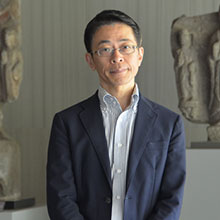
Noguchi Takeshi
Chief Curator, Curatorial Division, Nezu Museum
Born 1966. M.A. in Art History, University of Tokyo. Worked at the Museum of Kyoto before taking up Nezu Museum post in 2008. Specializing in the history of Japanese early modern painting, Noguchi currently researches the Kyoto Kanō and Rinpa schools as well as Kyoto painters of the latter 18th century like Maruyama Ōkyo.

